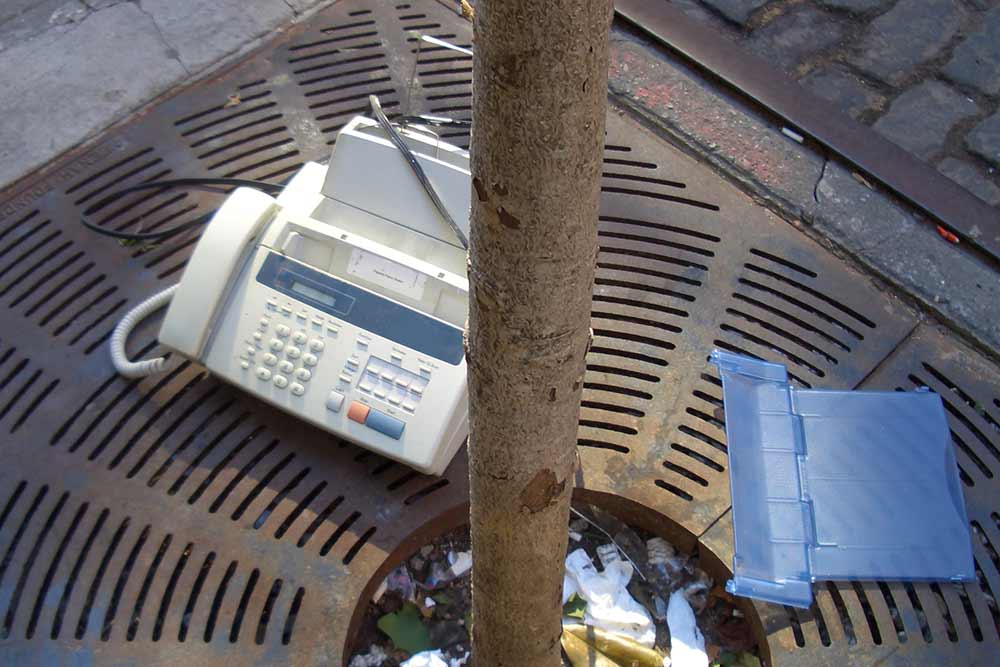
Abandoned fax, making way for the future of Open Data. Image: blueneurosis
In the 1995 Australian film Babe, when Mrs Hoggett was given a fax machine, it seemed like an amazing technological innovation that you could “send letters over the phone”. Especially on a timeless fantasy farm in the Southern Highlands that seemed to revel in its own antiquity.
But more than two decades later, those things that no-one seems to use anymore and you wonder why they’re even listed on people’s business cards are finally going the way of the dodo.
In a bid by the New South Wales government to modernise its technology credentials, the Department of Finance, Services and Innovation (DFSI) has announced that its ending its “archaic processes” by tossing away its fax machine network.
These fax lines have been on the way out in the last year, according to a statement from the DFSI, with 494 being eliminated in that time, resulting in annual savings of up to $200,000.
That’s a fair bit of cost when you take into account paper elements and system maintenance. When those systems aren’t being used as often as they might have been more than a decade ago, the government has decided it’s time for them to ship out.
Meanwhile, the government has also said that cheques will “soon go the way of the dinosaurs” in a bid to speed up payments to suppliers and reduce postage and handling costs, with DFSI cheque payments already down from 15,000 per month to fewer than 1,000.
Minister for Finance, Services and Property, Dominic Perrottet said tackling inefficient legacy systems and taking advantage of the best of new technology was vital to enabling government to better serve taxpayers.
“It is 2016, and there is no excuse for government departments being stuck in the past when it comes to basic operations,” Mr Perrottet said.
He said to better respond to the needs of “our citizens, we need to be flexible, agile and put progressive work practices in place”.
In this new, tech-friendly utopia that the government is trying to realise, it has release a revamped Budget Visualisation Tool (BVT), which displays DFSI Budget data in a ‘user-friendly format’.
The BVT breaks down core business expenses and capital expenditure for DFSI agencies, including Office of State Revenue, NSW Fair Trading, Service NSW and Property NSW.
Mr Perrottet said the tool – first introduced last year – improves transparency by putting complex Budget data into an easy-to-read format, empowering voters to better track government finances.
“Trawling through the Budget papers can feel like a bit like reading the phone book – finding the information you want takes time,” Mr Perrottet said.
“With this tool you can easily see how DFSI’s Budget has been allocated with just a few mouse clicks, which means a better understanding of government finances, and a more accountable government,” he said.
“Rather than being trapped in a PDF, the information is also available in an open format for developers to use as they see fit, on Data.NSW.gov.au
“This is just the start of our Open Data agenda. I want DFSI to be an exemplar for other departments and encourage them to also make budget data easy to view, access and use.”





